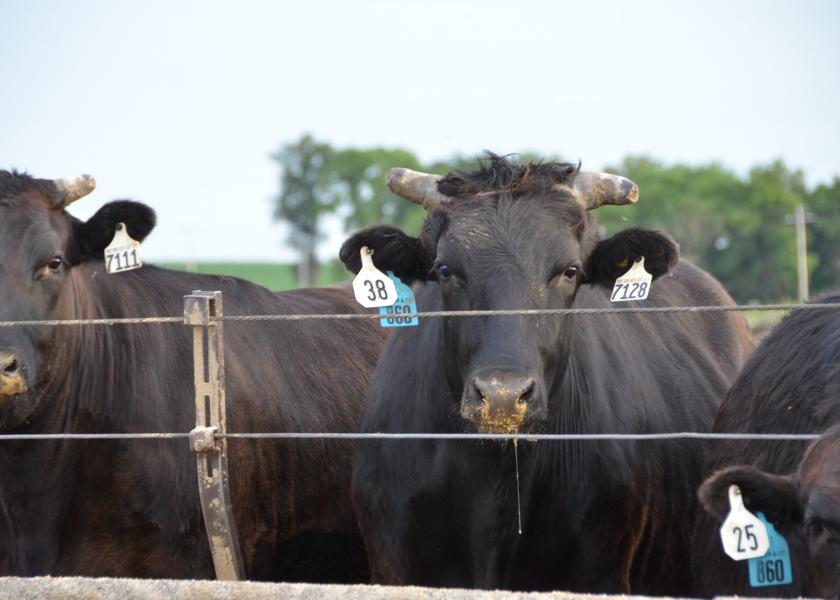Genetic Improvement 101

“Why do we need genetic evaluation?”
That’s a basic question, Dr. Natalie Leite admitted to the crowd attending the American Wagyu Association “Shaping the Future” annual convention in Charlotte, North Carolina. And the answer is just as basic; “We want to be concerned about selecting the best animals to compose the next generation in our herds.”
From there, however, things begin to go from basic to complicated. There’s genetics and genetic variation within a breed. Then there’s the environment the cattle live in, which can affect how animals’ genetics are expressed. So, the University of Georgia geneticist gave a refresher for the more experienced Wagyu breeders in the crowd and a tutorial for those new to the breed and beef production on the basics of genetic selection.
First, it’s important to decide what traits are important. Then, analyze the EPDs for the traits you want to improve or emphasize in the herd.
EPD stands for expected progeny difference and has been the standard bearer in genetic improvement for around 50 years. “The EPD is basically the value that, on average, we expect the progeny of a certain sire will perform in relation to other sires in the same evaluation,” she said.
That means, within a breed’s sire evaluation report, you can compare the potential for sires on various genetic traits. However, she cautioned Wagyu breeders that comparing EPDs from sires of different breeds or sires that aren’t included in the same evaluation can’t be done.
Leite demonstrated how EPDs work with a basic example looking at weaning weight. She took a hypothetical Bull A with an EPD of 70 and another with an EPD of 60. “So, the difference between these two sires is 10 pounds. What is the translation of that?”
The 10-pound difference in the EPDs means you can expect that the progeny of Bull A will perform 10 pounds better on average compared with Bull B.
Keep in mind, however, “When we talk about EPDs, we are talking about ‘expected.’ When we expect something, we are not certain about it.” Just because there’s a 10-pound difference between the two bulls in their EPDs doesn’t mean every calf from Bull A will weigh 10 pounds more at weaning than every calf from Bull B.
Enter accuracies. The more progeny data a bull has adds to the accuracy of the EPD. So, a young bull in a bull stud will have low accuracies while a bull that’s been around for a while and has lots of progeny data reported to the breed association will have higher accuracies.
That’s important because different genetic traits have different levels of heritability, she said. Heritability of a trait is expressed in decimals between 0 and 1. So a trait that is moderately heritable will be expressed as 0.3 or 0.4.
However, she reminded Wagyu breeders, it’s important to remember that genes for a particular trait don’t exist in a vacuum. “Something very interesting about genetics is genetic correlation. All the time we make a difference where we improve a trait, there is a high chance that we are also making changes in other traits.”
For example, if you’re selecting for heavier weaning and yearling weights, it’s possible that birth weights will increase as well.
That’s where selection indexes come to the fore. “A selection index will assure you that you’re not selecting the best animals (for a certain trait) but at the same time, they have a negative EPD on other traits,” she said. The selection index will indicate which animals are more genetically balanced. “Those are the animals you should be interested in the long term.”
Now consider genomics, or what the DNA analysis can discern about an animal’s genetic potential. “Within the same species, we share 99 percent of our genetic material,” Leite told Wagyu breeders. “But then there is 1 percent of the genetic material within a breed that’s different.” And that 1 percent can be millions of individual genes.
The points on the DNA helix where animals can differ are called markers. For example, a calf will share 50 percent of its DNA with the sire. “But the 50 percent that calf 1 shares with the sire is not the same 50 percent of calf 2. And we have markers that follow that.”
Assume you want to select for marbling and have several promising young bulls. A DNA analysis will show whether those young sires are more predisposed to sire calves with good marbling based on the markers for that trait.
The advantage is the genomic information will increase the accuracy of the EPD for young sires. And as genetic accuracy increases, generation interval decreases. “We can select animals at a much younger age because we have high accuracies. So, we increase genetic gain when we have genomic information,” she said.







